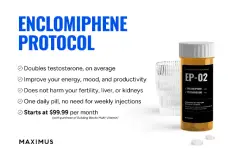PSA Screening, Prostate Biopsies, and Prostatitis: Prevalence and Outcomes
Frequency of PSA-Triggered Biopsies (U.S. and Global)- Prostate-specific antigen (PSA) screening became widespread in the 1990s, resulting in a high volume of prostate biopsies.
- In the United States, approximately 1 million prostate biopsies were performed annually at the height of PSA screening, with nearly all prompted by elevated PSA levels.
- Only about 25% of men who undergo a biopsy for an elevated PSA are found to have prostate cancer, meaning roughly 75% of PSA-triggered biopsies come back negative for cancer.
- North America and Europe together account for over 2 million prostate biopsies per year, and worldwide estimates exceed 3 million biopsies annually.
- These figures illustrate how common PSA-driven biopsies have been in the general population.
| Region | Annual Biopsies | Proportion Positive (Cancer) | Proportion Negative (No Cancer) |
|---|---|---|---|
| United States | ~1,000,000 | ~25% | ~75% |
| USA + Europe | >2,000,000 | ||
| Worldwide (est.) | >3,000,000 |
- False-positive PSA tests are very common, leading to many unnecessary biopsies. Clinical trials have shown that about 70–75% of elevated PSA results are false positives (no cancer is found).
- One large European study (ERSPC) reported 76% of PSA-positive screenings were false alarms.
- False positives are often due to benign conditions like benign prostatic hyperplasia (BPH) or prostatitis (inflammation of the prostate), both of which can raise PSA levels.
- Prostatitis is well-documented as a cause of PSA elevation—prostate infections or chronic inflammation can “leak” PSA into the bloodstream and push levels above normal even in the absence of cancer.
- Guidelines often recommend ruling out infection/inflammation (e.g., with antibiotic therapy or repeat PSA tests) before proceeding to biopsy.
- When men do undergo biopsy for an elevated PSA and no cancer is found, prostatitis is frequently identified as the likely explanation.
- In a U.S. screening study of 1,851 men (1989–2000), 25% were diagnosed with prostate cancer on first biopsy, while 7% were diagnosed with histological prostatitis (inflammation)—indicating the PSA rise was from prostatitis rather than cancer. Many others had only BPH.
- A Turkish study of men with high PSA reported that 28% of all patients biopsied had chronic prostatitis findings (with BPH) on their biopsy, without any cancer. In that series, ~71% of men had no cancer, and within those negatives, nearly 40% had evidence of asymptomatic inflammatory prostatitis.
- The large REDUCE trial noted that 77.6% of participants had evidence of prostatic inflammation in biopsy samples, underscoring how common subclinical inflammation is among men undergoing prostate biopsies.
- Pathology studies consistently find that prostate inflammation is a frequent histological finding in men with elevated PSA but no cancer. One review found inflammatory cells in around 40–50% of benign prostate biopsy specimens from men screened for high PSA.
| Study/Trial | % with Prostatitis/Inflammation (No Cancer) |
|---|---|
| U.S. screening study | 7% diagnosed with prostatitis |
| Turkish study | 28% chronic prostatitis (with BPH) |
| REDUCE trial | 77.6% with prostatic inflammation |
| Pathology reviews | 40–50% of benign biopsies show inflammation |
- PSA screening led to a surge in biopsies starting in the early 1990s, with prostate cancer diagnosis rates and “false alarms” both spiking.
- Around 2012, the U.S. Preventive Services Task Force advised against routine PSA screening, citing overdiagnosis and unnecessary procedures. Biopsy rates dropped significantly (one study showed a ~29% decrease after 2012).
- Modern practice often includes repeating PSA tests or using MRI/advanced tests to avoid unwarranted biopsies.
- Despite changes, millions of men over the past decades have had PSA-triggered biopsies that turned out benign, with many learning their PSA was elevated due to infection or inflammation, not cancer.
- On any given PSA screening round, about 6–7% of men will have a false-positive PSA that may lead to follow-up procedures.
- Over multiple rounds of screening, the probability of a man receiving at least one false-positive result is substantial—one analysis found roughly 20% of men screened underwent an unnecessary biopsy due to a PSA false alarm (number needed to harm = 5).
- Early in the PSA era, virtually any confirmed PSA rise >4 ng/mL prompted a biopsy, with cancer detection rates ~20–30% and 70–80% negative biopsies.
- Rapid PSA rise often points to prostatitis rather than cancer, leading to strategies like treating with antibiotics and repeating PSA to see if it drops (suggesting an inflammatory cause).
- Magnitude: Both in the U.S. and worldwide, millions of men have undergone prostate biopsies due to elevated PSA, and the majority did not have cancer.
- Prostatitis as cause: Among men with negative biopsies, a significant portion have histological prostatitis—e.g., 7% diagnosed outright in one cohort, ~28–40% showing inflammatory tissue changes in others.
- Trends: PSA screening has evolved, with more caution and advanced diagnostics reducing unnecessary biopsies, but a large number of men historically underwent biopsies for PSA rises ultimately attributed to prostatitis.
- Data gaps: There is no “official” tracking for how many biopsies turned out to be prostatitis. Cancer registries record cancer cases, not benign biopsy findings. Estimates rely on clinical studies and trials.
Consistency of Evidence
- All sources consistently show a large proportion of men with elevated PSA do not have cancer, often having benign prostate enlargement or inflammation.
- PSA has a high false-positive rate (~65–75%).
- Prostatitis is a major confounder in PSA testing, and numerous studies confirm that treating or identifying prostatitis can explain an elevated PSA in many cases.
- While exact global totals are not documented, it is estimated that millions of men worldwide have had biopsies for PSA rises ultimately attributed to prostatitis rather than cancer.
In summary, PSA screening has led to a very large number of prostate biopsies, especially in the U.S., and the majority of those biopsies have been negative, with prostatitis being a frequent culprit behind the PSA elevations. Only roughly 1 in 4 biopsies finds cancer, meaning 3 in 4 men had an unnecessary invasive procedure. Among those, prostatitis-induced PSA elevation is common—on the order of tens of percent of cases. This has been a significant issue in prostate cancer screening for decades. Efforts to refine screening (better markers, imaging, etc.) are ongoing to spare men from such unnecessary biopsies. If precise numbers are required, at least hundreds of thousands of men in the U.S. and millions globally over the years have had biopsies for PSA rises ultimately attributed to prostatitis rather than cancer. The evidence is clear that this is a widespread phenomenon, even if exact counts are hard to pinpoint.[/COLOR]
Citations
Prostate cancer now detectable using imaging-guided biopsy, UCLA study demonstrates | UCLA Health
Nearly all of the 1 million prostate biopsies performed annually in the U.S. are triggered by elevations in PSA levels, and about 240,000 new cases of prostate cancer are discovered each year. Thus, about 75 percent of biopsies are negative for cancer. However, many men with negative biopsies but elevated PSA levels may still harbor malignant tumors — tumors missed by conventional biopsies, said the study's senior author, Dr. Leonard S. Marks, a professor of urology and director of UCLA's active surveillance program.
Prostate-Specific Antigen (PSA) Test - NCI
have a false-positive PSA test on any given screening round, and only about 25% of men who have a biopsy due to an elevated PSA level are found to have prostate cancer (3).
“TREXIT 2020”: why the time to abandon transrectal prostate biopsy ...
“TREXIT 2020”: why the time to abandon transrectal prostate biopsy ... The vast majority of prostate biopsies are still performed using the TR approach—over 2 million per year in Europe and North America alone [6].
Dr. Jim Hu: The Case for a New Standard of Care in Prostate Biopsies | Commentary | Advances in Oncology and Urology | NewYork-Presbyterian
About 1 in 8 men will be diagnosed with prostate cancer in his lifetime, while 1 in 44 will die of it, according to the American Cancer Society. Prostate cancer is highly treatable if detected early, which makes testing all the more imperative. But while more than 3 million prostate biopsies are performed annually, the prevailing technique, known as the transrectal biopsy, exposes patients to the risk of infection.
Dr. Jim Hu: The Case for a New Standard of Care in Prostate Biopsies | Commentary | Advances in Oncology and Urology | NewYork-Presbyterian
imperative. But while more than 3 million prostate biopsies are performed annually, the prevailing technique, known as the transrectal biopsy, exposes patients to the risk of infection.
PSA Screening for Prostate Cancer | AAFP
for prostate biopsy, including infection, bleeding, clot formation, and urinary difficulties.4,5 The European Randomized Study of Screening for Prostate Cancer (ERSPC) trial reported that 76% of PSA positive results were false positives.^{6}
Prostate-Specific Antigen (PSA) Test - NCI
Various factors can increase someone’s PSA level temporarily. An infection or inflammation of the prostate or having had a recent prostate biopsy can cause PSA levels to be raised for a month or two. Vigorous exercise (such as cycling) and 31 can also increase the PSA level transiently. People are generally recommended to wait until any conditions that can change PSA level resolve before they have testing and to avoid activities that may raise the PSA level for 2 days before testing.
Prostate-Specific Antigen (PSA) Test - NCI
What is done if a screening test shows an elevated PSA level?
Oncology Times
Scott E. Eggener, MD: “A PSA rise is like a smoke alarm in the home. It warrants attention but doesn't mean that something is dramatically wrong. If it jumps dramatically, you should look to see if symptoms or urinalysis suggest infection. If infection is present, treat it as an infection and repeat the PSA. If there is nothing to suggest infection, we still recommend a repeat PSA to confirm the value. If it remains elevated, a biopsy to rule out cancer is warranted.”
Oncology Times
symptoms or laboratory findings suggestive of prostatitis should prompt an appropriate evaluation and consideration of treatment.
Oncology Times
ultrasound-guided prostate biopsies, Dr. Eggener noted.
2011-2.indd
cancer patients. In our study, patients without cancer (n=152, 71.02% of all patients) were determined histopathologically to exhibit BPH in 92 cases (42.99% of all patients) and BPH with chronic prostatitis (category IV prostatitis) in 60 cases (28.03% of all patients). Of these benign group patients, 102 exhibited PSA levels of between 4.0 and 9.9 ng/mL (47.66% of all patients), while 50 exhibited PSA levels ≥10.0 ng/mL (23.36% of all patients). Total PSA levels were
austinpublishinggroup.com
The Significance of Histological Chronic Prostatitis in Transrectal Prostate Biopsy
The reduce (Reduction by Dutasteride of prostate Cancer Events) trial [20] found that 77.6% of participants had prostatic inflammation at biopsy and a positive association between inflammation and prostate volume. In the MTOPS (Medical Therapy of Prostatic Symptom) trial, patients with acute or chronic prostatitis symptoms had larger prostates and higher PSA levels with higher progression of LUTS [21].
(PDF) Prostate health index and prostate cancer gene 3 score but ...
Introduction Histological inflammation is commonly found among asymptomatic men who were biopsied because of an elevated PSA level [1]. * Corresponding ...
National Prostate Biopsy and Radical Prostatectomy Volumes Decreased Significantly Following Recommendation against PSA Screening | Newsroom | Weill Cornell Medicine
Prostate biopsies and radical prostatectomies are used to test for and treat prostate cancer, respectively. These procedures typically occur when a patient is found to have elevated PSA levels. The USPSTF recommended against PSA testing in 2012 as a result of the Prostate, Lung, Colorectal and Ovarian (PLCO) trial due to concerns about over-diagnosis and over-treatment for non-life threatening cancers, but earlier this year, NewYork-Presbyterian and Weill Cornell Medicine researchers argued that the methodology behind that study was flawed in a perspective piece for the New England Journal of Medicine.
National Prostate Biopsy and Radical Prostatectomy Volumes Decreased Significantly Following Recommendation against PSA Screening | Newsroom | Weill Cornell Medicine
The researchers looked at the volume of prostate biopsies and radical prostatectomies performed by urologists from 2009 to 2016. Prior to the USPTF’s recommendation in 2012, the median number of biopsies performed per urologist per year was 29, and the median number of radical prostatectomies was seven per urologist per year. After the recommendation, those figures dropped to 21 biopsies and six radical prostatectomies per urologist per year, an overall decrease of 28.7 percent and 16.2 percent respectively. The significant drop in
Prostate-Specific Antigen (PSA) Test - NCI
False-positive test results are common with PSA screening. About 6%–7% of men have a false-positive PSA test on any given screening round, and ...
PSA Screening for Prostate Cancer | AAFP
Moreover, approximately 20% of men screened needlessly underwent biopsy because of a false-positive PSA result (number needed to harm [NNH] = 5).6,7
Oncology Times
But men with a PSA velocity of 4.0 ng/mL per year or higher were just as likely to have prostatitis as they were to have prostate cancer, said Dr. Eggener, who performed the study with William J. Catalona, MD, Professor of Urology at Northwestern University Fienberg School of Medicine.
Oncology Times
In the group of men who had a PSA velocity below 2.0 ng/mL in the year before biopsy, 30% had prostate cancer on their first biopsy and 5% had prostatitis. In the men with a PSA velocity of 4.0 ng/mL per year or higher, 13% had cancer on their first biopsy and 13% had prostatitis.
pmc.ncbi.nlm.nih.gov
Incidence of Histological Prostatitis and Its Correlation with PSA Density - PMC
The incidence of type IV prostatitis is unknown. There is a tendency to correlate inflammatory prostatitis with an elevation of PSA. Despite this controversy, when prostatitis is found in biopsy samples of patients with an elevated PSA, the rise in PSA is usually attributed to the presence of prostatitis.
Prostate-Specific Antigen - StatPearls - NCBI Bookshelf
Overall, PSA sensitivity ranges from 9% to 33%, depending on age and the PSA cut-off values, indicating that up to 91% of individuals with
Last edited:














